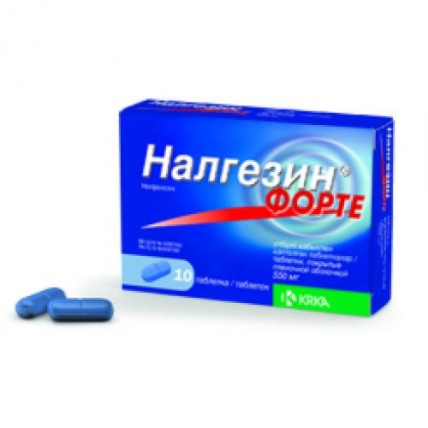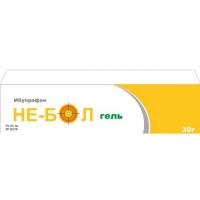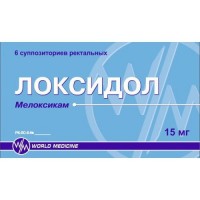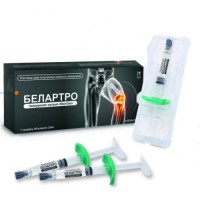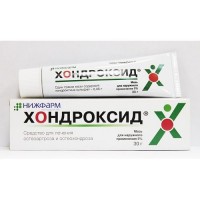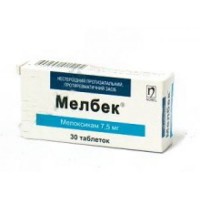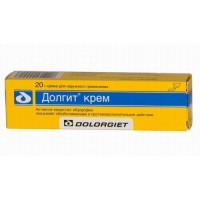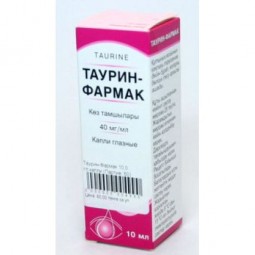Nalgezin® Forte (Naproxen) 550 mg, 10 film-coated tablets
- $8.80
The instruction for medical use of Nalgezin® medicine forte the Trade name of Nalgezin® forte the International unlicensed name Naproxenum Dosage Form of the Tablet, film coated, 550 mg Structure 1 tablet contains active agent - Naproxenum of sodium of 550 mg (it is equivalent to Naproxenum of 500 mg), excipients: K30 povidone, cellulose microcrystalline, talc, magnesium stearate, water the cleaned, film cover: Opadray 02F205004 blue (Ingredients: a gipromelloza, makrogol / polyethyleneglycol 8000, the titan dioxide (E171), dye indigo carmine aluminum varnish (E132)) the Description of the Tablet of an oval form, slightly biconvex, with risky on one party, film coated blue color Pharmacotherapeutic group Anti-inflammatory and antirheumatic drugs. Non-steroidal anti-inflammatory drugs. Propionic acid derivatives. Naproxenum. The ATX M01AE02 code the Pharmacological Pharmacokinetics Absorption Later properties of oral administration, Naproxenum of sodium is hydrolyzed in gastric acid. Microparticles of Naproxenum are released and quickly dissolved in a small intestine. It leads to the accelerated and full absorption of Naproxenum therefore concentration, effective for analgetic action, in blood plasma is reached in 15 - 20 min. After reception of one dose of Naproxenum of sodium, the peak of concentration in blood plasma is reached within 1-2 hours, and after one dose of Naproxenum - during 2-4 h, depending on fullness of a stomach. Extent of absorption significantly does not depend neither on food, nor on the majority of antacids. Equilibrium concentration is reached after 5 doses, that is within 2 - 3 days. Plasma levels of Naproxenum in proportion increase at doses to 500 mg. At high doses, they are less proportional, because of the saturation of the proteins of plasma connecting Naproxenum, the clearance of creatinine also increases. Distribution At a usual dose concentration of Naproxenum in blood plasma is in range from 23 mg/l to 49 mg/l. At concentration up to 50 mg/l, 99% of Naproxenum contacts proteins of plasma. At high concentrations the amount of untied active agent increases and at concentration of 473 mg/l is 2.4%. Because of extensive binding of proteins of plasma, the volume of distribution is small and is only 0.9 l/kg of body weight. Metabolism and removal About 70% of active agent is allocated in an invariable look, 60% contact glucuronic acid or other conjugates. Other 30% of Naproxenum are removed in the form of an inactive metabolite of 6-dimethyl-Naproxenum. About 95% of Naproxenum are removed with urine and 5% with excrements. The half-life period does not depend on a dose and concentration in blood plasma and is the 12-15th that allows to reach a steady state within 3 days after the beginning of therapy in the reception mode twice a day. The clearance of creatinine depends on concentration of Naproxenum in blood plasma probably because of increase in unbound particles of active agent at higher concentrations of Naproxenum in blood plasma. Metabolism at children is similar to metabolism at adults. The chronic alcoholic liver disease reduces the general concentration of Naproxenum in plasma, but concentration of untied Naproxenum increases. At elderly people the concentration of free Naproxenum in plasma increases though the general concentration in plasma remains invariable. The pharmacodynamics of Nalgezin® is non-steroidal anti-inflammatory drug. It has the anti-inflammatory, anesthetizing and febrifugal properties. The main mechanism of action is the cyclooxygenase inhibition - enzyme which participates in formation of prostaglandins. As a result, prostaglandin level in various liquids of an organism and in fabrics decreases. As well as other non-steroidal anti-inflammatory drugs, Naproxenum can cause gastrointestinal microbleedings and endoscopic the confirmed injuries of a digestive tract. It was established that Naproxenum causes less damages, than acetylsalicylic acid and indometacin, and more, than diflunizat, etodolak, nabumeton and Sulindac. As well as other non-steroidal anti-inflammatory drugs, Naproxenum also inhibits aggregation of thrombocytes, but at use in therapeutic doses it has insignificant impact on a bleeding time. Naproxenum does not influence function of healthy kidneys, was reported only about several undesirable effects at patients with renal or heart failure. Naproxenum does not strengthen uricosuric action. Indications - a pseudorheumatism - an osteoarthritis (degenerative arthritis) - an ankylosing spondylitis - acute gout - acute disorders of the musculoskeletal system - a dysmenorrhea the Route of administration and doses the Adult Pseudorheumatism, an osteoarthritis and an ankylosing spondylarthritis From 550 mg to 1100 mg divided into 2 receptions with a 12-hour interval or as an alternative - once. Acute gout the Initial dose makes 825 mg, then to 275 mg there are each 8 hours before the termination of an attack. Acute disorders of the musculoskeletal system and a dysmenorrhea the Initial dose of 550 mg, then, if necessary, reduce a dose to 275 mg with an interval of 6-8 h, with the maximum daily dose after the first day of reception of 1375 mg. The load dose At single reception or is recommended in the morning load 825 mg or 1100 mg a day during a sharp phase in the following cases in the evening: a) at patients with severe night pain or morning constraint b) at the patients beginning therapy with Naproxenum after transition from a high dose of other antirheumatic connection c) in an osteoarthrosis where the prevailing symptom is pain Elderly It is established that though the general concentration of Naproxenum in plasma does not change, an untied part of Naproxenum in plasma at elderly people increases. Consequences of this opening on dosing of Naproxenum are unknown. As well as with other drugs used at elderly people it is necessary to use the lowest effective dose and for the most possible short duration as emergence of side effects in elderly people is higher. The patient should control regularly gastrointestinal bleeding during therapy of NPVP. You watch effect of reduction of elimination at elderly people in the section Special Instructions. Children of Nalgezin® it is not recommended for use for children and teenagers up to 18 years (See the section Contraindications). A renal and liver failure At patients with a renal or liver failure low doses of drug are recommended. Naproxenum is contraindicated to patients with initial clearance of creatinine less than 20 ml/min. as at patients with a heavy renal failure or being on dialysis accumulation of metabolites of Naproxenum was observed. Treatment should be reconsidered through regular periods and to stop treatment if no advantage is observed or there is an intolerance. A route of administration For oral use. It is desirable to accept in time or after a meal. Side effects After reception of NPVP are possible side effects, such as dizziness, drowsiness, fatigue and disorders of vision. At emergence of such influences, patients should not run the vehicle or to work with mechanisms. Side effects which are registered with NPVP and Naproxenum are classified by classes of systems of bodies with the following frequency: often (≥ 1/100 & lt, 1/10), infrequently (≥ 1/1000 & lt, 1/100), it is rare (≥ 1/10,000 & lt, 1/1000), is very rare (& lt, 1/10,000), frequency is unknown (it is impossible to estimate on the available data). Disturbances from blood and lymphatic system seldom: hemolytic anemia very seldom: the granulocytopenia, thrombocytopenia, an agranulocytosis frequency is unknown: aplastic anemia, the Disturbance neutropenia from the immune system seldom: allergic reactions and reactions of hypersensitivity, the Disturbance anaphylaxis from a metabolism and food it is rare: the Disturbance hyperpotassemia from mentality infrequently: the depression, cognitive dysfunction, insomnia, concentration loss, a sleep disorder frequency is unknown: hallucinations. Disturbances from nervous system: often: confusion of consciousness, dizziness, drowsiness, a headache, it is rare: spasms, aseptic meningitis * frequency is unknown: dizziness, paresthesia, discomfort, exacerbation of Parkinson's disease of Disturbance from sight is frequent: visual disturbances frequency is unknown: optical neuritis, a papilloedema of Disturbance from hearing and balance it is frequent: a ring in ears it is rare: the Disturbance hearing disorder from heart infrequently: a cardiopalmus frequency is unknown: heart failure of Disturbance about the party of vessels seldom: vasculitis very seldom: the arterial trombotichesky phenomena (myocardial infarction or a stroke) of Disturbance from airways, a thorax and mediastinum it is rare: exacerbation of asthma, eosinophilic pneumonia frequency is unknown: a bronchospasm, an asthma, rhinitis, the Disturbance fluid lungs from digestive tract very seldom: pancreatitis frequency is unknown: a round ulcer, perforation or gastrointestinal bleeding **, nausea, vomiting, diarrhea, a meteorism, a constipation, dyspepsia, an abdominal pain, a melena, gematomezis, a stomacace, exacerbation of colitis and Crohn's disease, Disturbance gastritis from a liver and biliary tract: seldom: hepatitis (sometimes with a lethal outcome), jaundice frequency is unknown: abnormal liver functions. Disturbances from skin and hypodermic fabrics often: rash, itching, gemmoragichesky rash infrequently: a small tortoiseshell, the increased photosensitivity seldom: alopecia, pseudo-porphyria very seldom: the multiformny erythema, Stephens-Johnson's syndrome, a toxic epidermal necrolysis, a bullous epidermolysis frequency is unknown: an angioedema, an epidermal necrolysis, exfoliative and violent a dermatosis, red flat deprive of Disturbance from a musculoskeletal system and connective tissue it is rare: myalgia, muscle weakness. Disturbances from kidneys and an urinary system it is very rare: a glomerulonephritis, a hamaturia, interstitial nephrite, a nephrotic syndrome, renal papillary necrosis frequency is unknown: the renal failure, a nephropathy, the raised Disturbance serum creatinine from a reproductive system and mammary glands frequency is unknown: female infertility. The general disturbances and disturbances in the injection site it is frequent: fatigue frequency is unknown: slight peripheral hypostases, a hyperthermia * especially at patients with the existing autoimmune diseases, such as system lupus erythematosus, the mixed disease of connective tissue, with such symptoms as a headache with constraint of muscles of a neck, nausea, vomiting, fever and a disorientation. ** can sometimes lead to a lethal outcome, especially at elderly people (see the section Special Instructions). Clinical trials and epidemiological data demonstrate that use of some NPVP (especially at high doses and at long-term treatment) can be connected with the increased risk of developing arterial thromboses (for example, a myocardial infarction or a stroke (see the section Special Instructions)). Messages about the suspected side effects the Importance has messages about suspicions on side effects after medicine registration. It allows to continue monitoring of a ratio of advantages/risks of medicine. Experts in the field of health care are offered to report about any suspicions on side effects, having filled out the yellow map, on the contacts specified at the end of the instruction. Contraindications - hypersensitivity to sodium Naproxenum, Naproxenum or to any components to drugs. As there is a potential for cross-sensitive reactions, patients in whom aspirin or other nonsteroid anti-inflammatory/soothing drugs cause a syndrome of asthma, rhinitis, polyps of a nose or small tortoiseshell should not appoint Naproxenum. These reactions can be fatal. It is reported about heavy anaphylactic reactions to Naproxenum at such patients - existence in the anamnesis of a bronchospasm, bronchial asthma, polyps of a nose, rhinitis, urticaria, the anaphylactic or anaphylactoid reactions connected with acetylsalicylic acid or other non-steroidal anti-inflammatory drugs (NPVP) - heavy liver, renal or heart failure - the third trimester of pregnancy - a peptic ulcer of a stomach and (or) duodenum in a phase of aggravation or in the anamnesis, gastrointestinal bleeding (two or more separate episodes of the confirmed ulcer or bleeding), the gastrointestinal bleeding in the anamnesis connected with the previous treatment of NPVP - children's and teenage age up to 18 years (in connection with E132 dye content) Medicinal interactions As Naproxenum almost completely contacts proteins of plasma, at a concomitant use with hydantoin, anticoagulants or derivatives of sulphonylurea it is necessary to be careful and to carefully control overdose symptoms these drugs. The patients who are at the same time receiving Naproxenum and hydantoin, sulfonamide or sulphonylurea have to be on observation for correction of a dose if it is necessary. No interactions of Naproxenum with anticoagulants or sulfonilmochevina were observed, but it is recommended to be careful as interaction was noticed with other nonsteroid drugs of this class. At a concomitant use of NPVP, including Naproxenum, with drugs of lithium the concentration of lithium in plasma owing to inhibition of renal clearance of lithium increases that leads to decrease in removal of lithium. It is recommended to control lithium level before treatment, in the course of treatment and after the termination of intake of Naproxenum. Naproxenum reduces hypotensive effect of antihypertensive drugs. Simultaneous use of Naproxenum with beta-blockers can lead to decrease in their hypotensive action, increase risk of the renal failure connected with use of inhibitors the angiotensin-the converting enzyme (ACE) or antagonists of receptors of angiotensin II especially at patients with earlier existing broken renal function. With probenetsidy - elimination half-life of Naproxenum increases that leads to increase in a konecentration of Naproxenum in plasma. Naproxenum reduces canalicular secretion of a methotrexate in this connection risk of development of its toxic effects increases. It is reported that the natriuretic effect of furosemide is inhibited by some drugs of this class. NPVP can strengthen heart failure, reduce glomerular filtration rate and increase the level of cardiac glycosides in plasma. With cyclosporine, with other NPVP, risk of developing a renal failure, especially at the patients accepting AKF inhibitors increases. NPVP should not be used within 8-12 days after administration of mifepristone as it can bring with decrease in efficiency of mifepristone. As well as all NPVP, it is necessary to show care at joint introduction with corticosteroids because of the increased risk of developing gastrointestinal bleeding or an ulcer. NPVP can reduce efficiency of diuretics and hypotensive medicines. The risk of an acute renal failure which, as a rule, is reversible is higher at patients with impaired renal function (for example, the dehydrated sick or elderly patients), at combination with antagonists of receptors of angiotensin II with NPVP. It is necessary to be careful at such cases, especially at elderly people. To patients if necessary hydration is carried out and attention has to be paid to monitoring of renal function after the beginning of the accompanying therapy and, periodically, in the course of treatment. Diuretics can increase nephrotoxicity of NPVP. Simultaneous use of NPVP in combination with anticoagulants (such as warfarin or heparin) is considered unsafe, except for a possibility of direct medical observation as NPVP can strengthen effect of anticoagulants. NPVP can increase risk of the spasms connected with hinolonovy antibiotics. The patients accepting NPVP and hinolona have the increased risk of developing spasms. Antithrombocytic means and the selective serotonin reuptake inhibitors (SSRI) increase risk of gastrointestinal bleeding. Takrolimus can increase nephrotoxicity of NPVP. The zidovudine increases risk of hematologic toxicity. There are proofs of the increased risk of gemaartroz and a hematoma at HIV (+) the patients with hemophilia receiving at the same time treatment by a zidovudine and an ibuprofa
of ohms. Simultaneous use of bisfosfonat and NPVP can increase risk of damage mucous a stomach. Simultaneous use with antacids or Colestyraminum delays Naproxenum absorption, but does not influence extent of influence. Naproxenum should be accepted, at least, in one hour prior to or four-six hours later later uses of Colestyraminum. Special instructions Side effects can be minimized when using the lowest effective dose during the shortest possible period necessary for control of symptoms. Cardiovascular and cerebrovascular disturbances the care (consultation with the doctor) at patients with a hypertension and/or with stagnant heart failure of easy and average degree in the anamnesis Is necessary. Such symptoms as a liquid delay, hypertensia and hypostases about which were reported at treatment by other non-selective NPVP can lead to development warmly - vascular and cerebrovascular disorders. It is supposed that use of a koksib and some NPVP (especially in high doses and at long-term treatment) can be connected with small increase in risk of arterial thrombosis (for example, risk of developing a myocardial infarction or stroke). Though data show that Naproxenum use (1000 mg a day) can be connected with lower risk, completely the risk cannot be excluded. It is necessary to estimate all risks before prescribing of Naproxenum to patients with uncontrollable arterial hypertension, the stagnant heart failure established by coronary heart disease, a disease of peripheral arteries, and/or cerebrovascular diseases. Special attention has to be paid prior to long-term treatment to patients with risk factors of developing cardiovascular pathology (for example, arterial hypertension, a lipidemia, diabetes, smoking). Gastrointestinal bleedings, ulcers and perforation Are available messages about gastrointestinal bleedings, ulcers or perforation which can be deadly, NPVP connected with use, during treatment, with or without the warning symptoms or in the presence in the anamnesis of serious gastrointestinal bleedings at any time. The risk of gastrointestinal bleedings, ulcers or perforation increases at increase in a dose of NPVP at patients with a peptic ulcer in the anamnesis, especially if there were complications which are followed by bleeding or perforation of an ulcer and also at elderly. These patients have to begin treatment with a minimal effective dose. For this group of patients and also for the patients needing the accompanying therapy by aspirin in low doses, or other drugs increasing risk of gastrointestinal disturbances use of combination therapy with the protecting drugs is possible (for example, mizoprostoly or inhibitor of a protonew pomp). The patients having gastrointestinal diseases in the anamnesis especially elderly, have to report about any unusual abdominal symptoms (especially about gastrointestinal bleedings) and especially at the initial stages of treatment. It is necessary to be careful at the patients receiving simultaneous treatment with the drugs increasing risk of developing an ulcer or bleeding such as oral corticosteroids, anticoagulants (as warfarin), selective serotonin reuptake inhibitors or with antithrombocytic means (as acetylsalicylic acid). When developing gastrointestinal bleedings or ulcers at the patients receiving Nalgezin®, treatment has to be stopped. NPVP should appoint with care to patients with gastrointestinal diseases in the anamnesis (nonspecific ulcer colitis, Crohn's disease) as their state can be aggravated. Use of NPVP can lead cardiovascular, renal and hepatic disturbances to dose-dependent decrease in synthesis of prostaglandins and accelerate development of a renal failure. Patients with the greatest risk of this reaction - patients with renal failures, heart failure, liver dysfunction and also the accepting diuretics and elderly patients. At such patients it is necessary to control renal function (see the section Contraindications). Impaired renal function Naproxenum should be used carefully at patients with a renal failure as it substantially (95%) is removed by glomerular filtration, at such patients the monitoring of serumal creatinine and/or clearance of creatinine is necessary, also patients have to receive the adequate volume of liquid. Naproxenum is not recommended for use for the patients having basic clearance of creatinine less than 20 ml/min. At some patients with the broken renal blood-groove because of decrease in extracellular volume, cirrhosis, restriction of sodium, stagnant heart failure and earlier existing renal diseases, it is necessary to estimate function of kidneys prior to the beginning of and during treatment by Naproxenum. Elderly patients with risk of a renal failure and also the patients who are on treatment by diuretics also get to this category. It is necessary to consider reduction of a daily dose to avoid a possibility of excessive accumulation of metabolites of Naproxenum at this category of patients. The broken function of a liver the Chronic alcoholic liver disease and other forms of cirrhosis lead to decrease in the general concentration of Naproxenum in plasma, but concentration in plasma of untied Naproxenum increases. The mechanism of this phenomenon for dosing of Naproxenum is unknown, but it is preferable to use the lowest effective dose. Drug has to be used with care at patients from the liver broken by function in the anamnesis. At elderly patients the frequency of development of side reactions of NPVP is higher, especially gastrointestinal bleedings and perforation which can lead to a lethal outcome. Disturbances of a respiratory system patients need to show care when assigning with bronchial asthma including in the anamnesis, or allergic reaction to dust as NPVP can cause a bronchospasm. The hard currency and the mixed disease of connective tissue At patients with the system lupus erythematosus (SLE) and the mixed disturbances of connective tissue can be raised risk of aseptic meningitis (see the section Side effects). Dermatological disturbances Are available very rare messages about serious skin reactions (some from the death) in connection with use of NPVP including exfoliative dermatitis, Stephens-Johnson's syndrome and a toxic epidermal necrolysis. Patients, as it is represented, are exposed to the greatest risk of development of these reactions at the beginning of therapy, the majority of cases, their first signs appear within the first month of treatment. Nalgezin's reception has to be stopped at the first appearance of skin rash, defeat mucous or any other symptom of hypersensitivity. Disturbances of female fertility Use of Naproxenum can worsen female fertility and is not recommended to the women trying to become pregnant. At women who experience difficulties with conception or who undergo inspection on infertility it is necessary to stop intake of Naproxenum. Anaphylactic (anaphylactoid) reactions Anaphylactoid reactions, such as anaphylaxis, can lead to a lethal outcome. Naproxenum, as well as other NPVP, reduces aggregation of thrombocytes and prolongs coagulation time. This effect should be considered when determining time of coagulation. Patients with disturbances of coagulation or accepting therapy by drugs which influence a hemostasis, should be observed carefully when prescribing Naproxenum. The patients taking a full course of anticoagulating therapy (for example, heparin or warfarin), can be exposed to the increased risk of bleeding at Naproxenum co-administration. Therefore it is necessary to weigh advantage and these risks. At several patients accepting Naproxenum the weak peripheral hypostasis was observed. Though there are no messages about deduction of sodium, it is possible that patients with the doubtful or broken function can be exposed to bigger risk at intake of Naproxenum. Steroids If in the course of treatment the reduction or cancellation of steroid is required, then the dose needs to be reduced slowly and patients have to be under careful control regarding development of possible side effects, including adrenal insufficiency and aggravation of symptoms of arthritis Influence on sight of the Research did not show the ophthalmologic changes connected with Naproxenum use. In rare instances, adverse disorders of eyes, including a papillitis, retrobulbar neuritis and a papilledema, were registered at users of NPVP, including Naproxenum though relationship of cause and effect is not established, and, respectively, patients in whom disturbances in eyes are found during treatment with naproksensoderzhashchy drugs, have to pass ophthalmologic the Combination with other NPVP the Combination of naproksensoderzhashchy drugs and other NPVP is not recommended because of the overall risks provoking serious side effects of NPVP. It is necessary to avoid simultaneous use of Naproxenum with NPVP, including selection inhibitors of cyclooxygenase-2. As a result of febrifugal and anti-inflammatory effect of Naproxenum the heat and inflammation decreases, their usefulness as diagnostic characters thereby decreases. Intervention in tests Is recommended the temporary termination therapy by Naproxenum in 48 hours prior to carrying out functional tests of adrenal glands as Naproxenum can artefaktivno influence some tests for 17-ketogenic steroids. Similarly, Naproxenum can affect some results of analyses of 5-hydroxyindolacetic acid in urine. Sporadic deviations in laboratory tests (for example, hepatic test) took place at the patients accepting Naproxenum, but any certain trend, demonstrating toxicity, in tests was not observed. The headache caused by excessive use of medicines (GBLP) After long-term treatment by analgetics can develop or become aggravated a headache. The headache caused by the excessive use of analgetics (GBLP - the headache caused by excessive use of medicines), it is necessary to suspect at patients with frequent or daily headaches, despite (or owing to) regular use of analgetics. Patients, suffering headache caused by excessive use of medicines it is not necessary to treat by increase in a dose. In such cases the intake of analgetics should be stopped in coordination with the doctor. Pregnancy and a lactation Pregnancy Inhibition of synthesis of prostaglandin can negatively influence pregnancy and/or development of an embryo/fruit. Assume the increased risk of an abortion and heart failure after use of inhibitor of synthesis of prostaglandin in the early stages of pregnancy. Absolute risk of developing cardiovascular diseases increased from less than 1% to about 1.5%. It is considered that the risk increases with increase in a dose and lasting therapies. During the first and second trimesters of pregnancy it is not necessary to appoint Naproxenum if in there is no emergency. At Naproxenum use by the woman planning pregnancy or during the first and second trimesters of pregnancy, the dose has to be the smallest and treatment duration as it is possible well. During the third trimester of pregnancy, all inhibitors of synthesis of prostaglandins can lead to the following disturbances: At a fruit - warm toxicity (premature closing of an arterial channel and pulmonary hypertensia) - renal dysfunction which can progress to a renal failure with oligogidramniony At mother and the newborn and also at the end of pregnancy: - possible extension of a bleeding time, anti-aggregation effect which can arise even at very low doses - inhibition of uterine reductions in result of a delay or long childbirth. Therefore, Naproxenum is contraindicated during the last trimester of pregnancy. A lactation of NPVP can get into breast milk in very low concentration therefore their reception it is necessary to avoid, whenever possible, during breastfeeding. Налгезин® the indigo carmine forbidden to use in medicines for children therefore it is contraindicated for use for children and teenagers up to 18 years contains dye. Features of influence of medicine on ability to run the vehicle or potentially dangerous mechanisms Some patients can feel dizzy, drowsiness, dizziness, insomnia, fatigue, a disorder of vision or a depression at Naproxenum use. At emergence of these or other podobnykhnezhelatelny yavlyaeniye the patients should not upravyalt by machine or other mechanisms. Overdose Symptoms: abdominal pain, nausea, vomiting, gastrointestinal bleeding, it is rare - diarrhea, dizziness, sonitus, irritability, in more serious cases - a hematemesis, a melena, disturbance of consciousness, breath disorder. In cases of considerable poisoning the acute renal failure and injury of a liver Treatment are possible: symptomatic. Within one hour after reception of potentially toxic amount of the drug it is necessary to take activated carbon. As an alternative for adults, within one hour after reception of potentially life-threatening dose of drug it is necessary to make gastric lavage. It is necessary to provide an intensive diuresis. It is necessary to control functions of a liver and kidneys carefully. Patients have to be under observation within not less than four hours after reception of potentially toxic amount of drug. Frequent or long spasms it is necessary to treat diazepam which needs to be entered intravenously. Depending on a clinical condition of the patient other measures can be taken. The hemodialysis is inefficient because of high extent of linking of Naproxenum with proteins. However, the patients with a renal failure who accepted Naproxenum can have reasonable carrying out a hemodialysis. The form of release and packing On 10 tablets place in the blister strip packaging (perforated) from a film of polyvinylchloride and aluminum foil. On 1 blister strip packaging together with the instruction for medical use in the state and Russian languages place in a pack from cardboard.
To develop
of ohms. Simultaneous use of bisfosfonat and NPVP can increase risk of damage mucous a stomach. Simultaneous use with antacids or Colestyraminum delays Naproxenum absorption, but does not influence extent of influence. Naproxenum should be accepted, at least, in one hour prior to or four-six hours later later uses of Colestyraminum. Special instructions Side effects can be minimized when using the lowest effective dose during the shortest possible period necessary for control of symptoms. Cardiovascular and cerebrovascular disturbances the care (consultation with the doctor) at patients with a hypertension and/or with stagnant heart failure of easy and average degree in the anamnesis Is necessary. Such symptoms as a liquid delay, hypertensia and hypostases about which were reported at treatment by other non-selective NPVP can lead to development warmly - vascular and cerebrovascular disorders. It is supposed that use of a koksib and some NPVP (especially in high doses and at long-term treatment) can be connected with small increase in risk of arterial thrombosis (for example, risk of developing a myocardial infarction or stroke). Though data show that Naproxenum use (1000 mg a day) can be connected with lower risk, completely the risk cannot be excluded. It is necessary to estimate all risks before prescribing of Naproxenum to patients with uncontrollable arterial hypertension, the stagnant heart failure established by coronary heart disease, a disease of peripheral arteries, and/or cerebrovascular diseases. Special attention has to be paid prior to long-term treatment to patients with risk factors of developing cardiovascular pathology (for example, arterial hypertension, a lipidemia, diabetes, smoking). Gastrointestinal bleedings, ulcers and perforation Are available messages about gastrointestinal bleedings, ulcers or perforation which can be deadly, NPVP connected with use, during treatment, with or without the warning symptoms or in the presence in the anamnesis of serious gastrointestinal bleedings at any time. The risk of gastrointestinal bleedings, ulcers or perforation increases at increase in a dose of NPVP at patients with a peptic ulcer in the anamnesis, especially if there were complications which are followed by bleeding or perforation of an ulcer and also at elderly. These patients have to begin treatment with a minimal effective dose. For this group of patients and also for the patients needing the accompanying therapy by aspirin in low doses, or other drugs increasing risk of gastrointestinal disturbances use of combination therapy with the protecting drugs is possible (for example, mizoprostoly or inhibitor of a protonew pomp). The patients having gastrointestinal diseases in the anamnesis especially elderly, have to report about any unusual abdominal symptoms (especially about gastrointestinal bleedings) and especially at the initial stages of treatment. It is necessary to be careful at the patients receiving simultaneous treatment with the drugs increasing risk of developing an ulcer or bleeding such as oral corticosteroids, anticoagulants (as warfarin), selective serotonin reuptake inhibitors or with antithrombocytic means (as acetylsalicylic acid). When developing gastrointestinal bleedings or ulcers at the patients receiving Nalgezin®, treatment has to be stopped. NPVP should appoint with care to patients with gastrointestinal diseases in the anamnesis (nonspecific ulcer colitis, Crohn's disease) as their state can be aggravated. Use of NPVP can lead cardiovascular, renal and hepatic disturbances to dose-dependent decrease in synthesis of prostaglandins and accelerate development of a renal failure. Patients with the greatest risk of this reaction - patients with renal failures, heart failure, liver dysfunction and also the accepting diuretics and elderly patients. At such patients it is necessary to control renal function (see the section Contraindications). Impaired renal function Naproxenum should be used carefully at patients with a renal failure as it substantially (95%) is removed by glomerular filtration, at such patients the monitoring of serumal creatinine and/or clearance of creatinine is necessary, also patients have to receive the adequate volume of liquid. Naproxenum is not recommended for use for the patients having basic clearance of creatinine less than 20 ml/min. At some patients with the broken renal blood-groove because of decrease in extracellular volume, cirrhosis, restriction of sodium, stagnant heart failure and earlier existing renal diseases, it is necessary to estimate function of kidneys prior to the beginning of and during treatment by Naproxenum. Elderly patients with risk of a renal failure and also the patients who are on treatment by diuretics also get to this category. It is necessary to consider reduction of a daily dose to avoid a possibility of excessive accumulation of metabolites of Naproxenum at this category of patients. The broken function of a liver the Chronic alcoholic liver disease and other forms of cirrhosis lead to decrease in the general concentration of Naproxenum in plasma, but concentration in plasma of untied Naproxenum increases. The mechanism of this phenomenon for dosing of Naproxenum is unknown, but it is preferable to use the lowest effective dose. Drug has to be used with care at patients from the liver broken by function in the anamnesis. At elderly patients the frequency of development of side reactions of NPVP is higher, especially gastrointestinal bleedings and perforation which can lead to a lethal outcome. Disturbances of a respiratory system patients need to show care when assigning with bronchial asthma including in the anamnesis, or allergic reaction to dust as NPVP can cause a bronchospasm. The hard currency and the mixed disease of connective tissue At patients with the system lupus erythematosus (SLE) and the mixed disturbances of connective tissue can be raised risk of aseptic meningitis (see the section Side effects). Dermatological disturbances Are available very rare messages about serious skin reactions (some from the death) in connection with use of NPVP including exfoliative dermatitis, Stephens-Johnson's syndrome and a toxic epidermal necrolysis. Patients, as it is represented, are exposed to the greatest risk of development of these reactions at the beginning of therapy, the majority of cases, their first signs appear within the first month of treatment. Nalgezin's reception has to be stopped at the first appearance of skin rash, defeat mucous or any other symptom of hypersensitivity. Disturbances of female fertility Use of Naproxenum can worsen female fertility and is not recommended to the women trying to become pregnant. At women who experience difficulties with conception or who undergo inspection on infertility it is necessary to stop intake of Naproxenum. Anaphylactic (anaphylactoid) reactions Anaphylactoid reactions, such as anaphylaxis, can lead to a lethal outcome. Naproxenum, as well as other NPVP, reduces aggregation of thrombocytes and prolongs coagulation time. This effect should be considered when determining time of coagulation. Patients with disturbances of coagulation or accepting therapy by drugs which influence a hemostasis, should be observed carefully when prescribing Naproxenum. The patients taking a full course of anticoagulating therapy (for example, heparin or warfarin), can be exposed to the increased risk of bleeding at Naproxenum co-administration. Therefore it is necessary to weigh advantage and these risks. At several patients accepting Naproxenum the weak peripheral hypostasis was observed. Though there are no messages about deduction of sodium, it is possible that patients with the doubtful or broken function can be exposed to bigger risk at intake of Naproxenum. Steroids If in the course of treatment the reduction or cancellation of steroid is required, then the dose needs to be reduced slowly and patients have to be under careful control regarding development of possible side effects, including adrenal insufficiency and aggravation of symptoms of arthritis Influence on sight of the Research did not show the ophthalmologic changes connected with Naproxenum use. In rare instances, adverse disorders of eyes, including a papillitis, retrobulbar neuritis and a papilledema, were registered at users of NPVP, including Naproxenum though relationship of cause and effect is not established, and, respectively, patients in whom disturbances in eyes are found during treatment with naproksensoderzhashchy drugs, have to pass ophthalmologic the Combination with other NPVP the Combination of naproksensoderzhashchy drugs and other NPVP is not recommended because of the overall risks provoking serious side effects of NPVP. It is necessary to avoid simultaneous use of Naproxenum with NPVP, including selection inhibitors of cyclooxygenase-2. As a result of febrifugal and anti-inflammatory effect of Naproxenum the heat and inflammation decreases, their usefulness as diagnostic characters thereby decreases. Intervention in tests Is recommended the temporary termination therapy by Naproxenum in 48 hours prior to carrying out functional tests of adrenal glands as Naproxenum can artefaktivno influence some tests for 17-ketogenic steroids. Similarly, Naproxenum can affect some results of analyses of 5-hydroxyindolacetic acid in urine. Sporadic deviations in laboratory tests (for example, hepatic test) took place at the patients accepting Naproxenum, but any certain trend, demonstrating toxicity, in tests was not observed. The headache caused by excessive use of medicines (GBLP) After long-term treatment by analgetics can develop or become aggravated a headache. The headache caused by the excessive use of analgetics (GBLP - the headache caused by excessive use of medicines), it is necessary to suspect at patients with frequent or daily headaches, despite (or owing to) regular use of analgetics. Patients, suffering headache caused by excessive use of medicines it is not necessary to treat by increase in a dose. In such cases the intake of analgetics should be stopped in coordination with the doctor. Pregnancy and a lactation Pregnancy Inhibition of synthesis of prostaglandin can negatively influence pregnancy and/or development of an embryo/fruit. Assume the increased risk of an abortion and heart failure after use of inhibitor of synthesis of prostaglandin in the early stages of pregnancy. Absolute risk of developing cardiovascular diseases increased from less than 1% to about 1.5%. It is considered that the risk increases with increase in a dose and lasting therapies. During the first and second trimesters of pregnancy it is not necessary to appoint Naproxenum if in there is no emergency. At Naproxenum use by the woman planning pregnancy or during the first and second trimesters of pregnancy, the dose has to be the smallest and treatment duration as it is possible well. During the third trimester of pregnancy, all inhibitors of synthesis of prostaglandins can lead to the following disturbances: At a fruit - warm toxicity (premature closing of an arterial channel and pulmonary hypertensia) - renal dysfunction which can progress to a renal failure with oligogidramniony At mother and the newborn and also at the end of pregnancy: - possible extension of a bleeding time, anti-aggregation effect which can arise even at very low doses - inhibition of uterine reductions in result of a delay or long childbirth. Therefore, Naproxenum is contraindicated during the last trimester of pregnancy. A lactation of NPVP can get into breast milk in very low concentration therefore their reception it is necessary to avoid, whenever possible, during breastfeeding. Налгезин® the indigo carmine forbidden to use in medicines for children therefore it is contraindicated for use for children and teenagers up to 18 years contains dye. Features of influence of medicine on ability to run the vehicle or potentially dangerous mechanisms Some patients can feel dizzy, drowsiness, dizziness, insomnia, fatigue, a disorder of vision or a depression at Naproxenum use. At emergence of these or other podobnykhnezhelatelny yavlyaeniye the patients should not upravyalt by machine or other mechanisms. Overdose Symptoms: abdominal pain, nausea, vomiting, gastrointestinal bleeding, it is rare - diarrhea, dizziness, sonitus, irritability, in more serious cases - a hematemesis, a melena, disturbance of consciousness, breath disorder. In cases of considerable poisoning the acute renal failure and injury of a liver Treatment are possible: symptomatic. Within one hour after reception of potentially toxic amount of the drug it is necessary to take activated carbon. As an alternative for adults, within one hour after reception of potentially life-threatening dose of drug it is necessary to make gastric lavage. It is necessary to provide an intensive diuresis. It is necessary to control functions of a liver and kidneys carefully. Patients have to be under observation within not less than four hours after reception of potentially toxic amount of drug. Frequent or long spasms it is necessary to treat diazepam which needs to be entered intravenously. Depending on a clinical condition of the patient other measures can be taken. The hemodialysis is inefficient because of high extent of linking of Naproxenum with proteins. However, the patients with a renal failure who accepted Naproxenum can have reasonable carrying out a hemodialysis. The form of release and packing On 10 tablets place in the blister strip packaging (perforated) from a film of polyvinylchloride and aluminum foil. On 1 blister strip packaging together with the instruction for medical use in the state and Russian languages place in a pack from cardboard.
To develop
